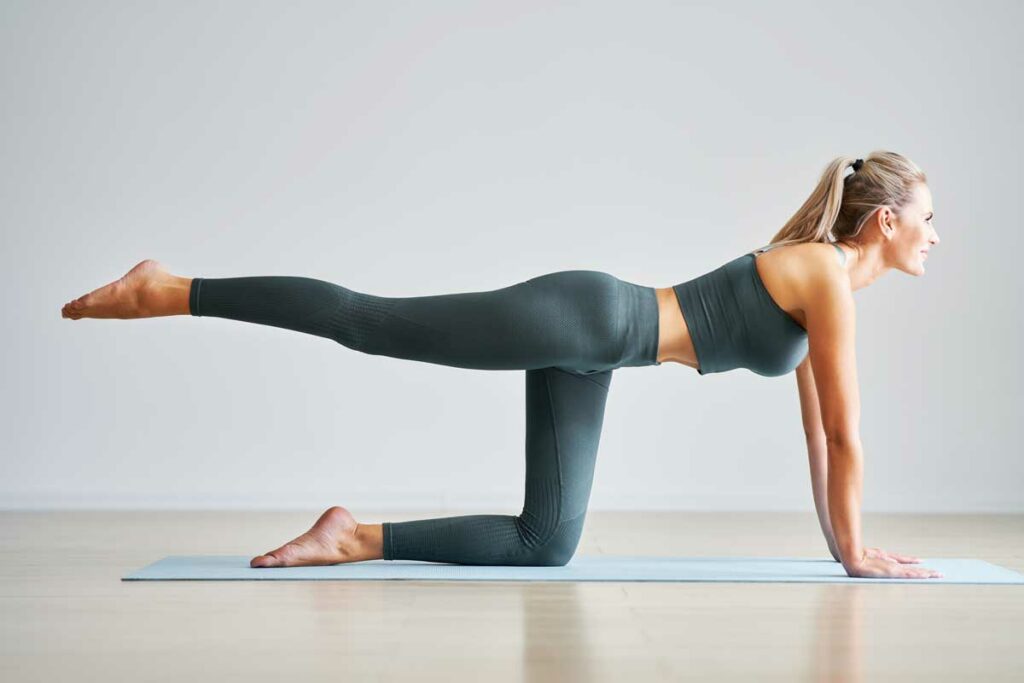Exercise is an important part of the integrative approach to plastic surgery, so it’s natural to wonder about how to exercise after surgery. Following your commitment to achieve a brand new body, you’ll want to tone it, refine it, keep it healthy, and show it off to the world. The good news is that exercise can help facilitate healing. At a certain point, it can even enhance your body’s ability to heal itself, not to mention the fact that regular physical activity is excellent for your mental health and your overall mood.
Of course, the bad news is that you can undo all of your hard work and potentially hurt yourself if you push yourself to exercise too soon. Typically, most doctors and plastic surgeons recommend that their patients stay out of the gym and away from hardcore activity for about a month following surgery. However, that depends on the procedure, the health of the patient, and numerous other factors.
You have your whole life to exercise after plastic surgery. There’s no reason to jeopardize your recovery by forcing yourself to do too much, too soon. Talk to your doctor about easy, low-impact activities that are safe for you to do, but avoid high-intensity workouts that may cause more harm than good. If you’re unsure about how to proceed, then keep reading. Salameh Plastic Surgery has a guide that shows you when and how to exercise following your plastic surgery procedure.
Sit Still for 48 Hours
You don’t have to sit perfectly still for 48 hours, but as a general rule, many doctors urge their patients to avoid physical activity or light exercise after surgery for at least two days. Depending on your level of discomfort or pain, you might want to take it easy for a few days afterward. You can walk around the house, maybe even around the block, but you should in no way be heading to the gym or jumping on the treadmill.
After the first couple of days, normal activity is usually allowed. Talk to your plastic surgeon about what to expect. He or she can help you to come up with a manageable exercise program, as well. Don’t expect too much from it, though. You’re still likely to be limited. You can use the stationary bike on a low, easy setting, for example, or go for a slow-paced walk around the park.
Full-Body Rest

Some patients assume that it’s safe to exercise any part of the body that didn’t undergo surgery. For example, you may think that because you had a breast augmentation or rhinoplasty, you can safely handle leg day at the gym or lift weights to tone your arms. That’s not the case. Any type of exercise is jarring to your body and has the potential to strain your muscles, cause internal bruising, or open your stitches. It’s not worth the risk to exercise after plastic surgery before it’s safe to do so. You need to rest your entire body, not just the part that underwent surgery.
Exercising After Liposuction
As mentioned, exercising after surgery depends largely on the surgery you have, especially as it applies to the timeline of your recuperation. Liposuction is no longer the intense procedure it once was, but it’s still a form of surgery. Most doctors agree that patients can resume light exercise after about three weeks, but you also need to consider where you had the liposuction done. If you have liposuction near any of your joints, such as your elbows or knees, then you can’t do exercises that put pressure on those regions.
Once you hit the fifth week, you should have the all-clear to exercise. Your body should be well-healed, at least enough to handle an upgraded workout routine. At this point, you can jog without too much of a worry, and you can resume any exercises that involve your abdomen and midsection.
Exercising After a Face Lift

You might think that you can exercise after plastic surgery that involves your face, but think again. Although your gym routine doesn’t involve your head or facial features, high-impact exercises can jar the sensitive bones, muscles, and tissues in your face. Furthermore, some forms of exercise can raise your blood pressure, especially cardio. That stress is no good for your recovery, and it may even undo all of the amazing work done by your plastic surgeon.
Exercising After a Breast Augmentation
Breast implants and breast reductions are both major surgeries that involve the pectoralis major. Your torso will be just as sore and under strain as your chest following any type of breast surgery. For that reason, many doctors forbid their patients from stressing or exercising their torsos during the first month of post-op recuperation.
That means you can’t lift weights, go jogging, work on your core, or do push-ups for four weeks after your surgery. You can’t put any pressure on your back or your chest. Easy exercises that involve the lower body are generally safe. At four weeks, you can probably exercise your arms again. Gradually, you can return to working out your chest and pectoral muscles.
Be careful before returning to exercise after surgery, and follow your surgeon’s instructions religiously.
You’re on the cusp of a major transformation. In order to protect the beautiful results you’re about to experience, keep in mind that plastic surgery is a serious medical event that deserves attention and care. Eventually, exercise will become a critical component in the integrative approach to a perfected mind and body. Get in touch with Salameh Plastic Surgery to learn more about how to care for your body following a surgical procedure.

